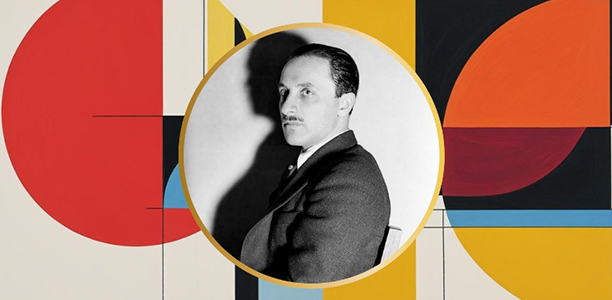Marc Blitzstein: cubist opera premiere in Berlin

On 21 September the Berlin Music Festival presents the concert premiere – close to a century after its composition - of a Bauhaus-influenced geometric dance opera by Marc Blitzstein. The composer of Parabola and Circula was a leading figure of 1920s American new music, a friend of Aaron Copland and mentor of Leonard Bernstein.
For several years now, a team associated with the Bauhaus Archive / Museum of Design, led by musicologist Kai Hinrich Müller, conductor Karl-Heinz Steffens and pianist Michal Friedländer, has been researching the topic of Bauhaus and music. They presented the results of their research to the public in 2023 and 2024. The most sensational discovery in their research into the interactions between the architectural and musical avant-garde of the early 20th century will be presented at this year's Berlin Music Festival: the posthumous premiere of Marc Blitzstein's Bauhaus opera Parabola and Circula, probably the only “cubist” opera in music history.
> Visit the Berlin Festival website
Blitzstein, born in 1905, was one of the leading figures in the American new music scene during the 1920s, alongside Aaron Copland, and is considered, along with Copland, to be Leonard Bernstein's most important mentor. He first studied at the Curtis Institute in Philadelphia, then with Nadia Boulanger in Paris and finally with Arnold Schoenberg in Berlin, where he joined the November Group whose members also included musicians associated with the Bauhaus such as Stefan Wolpe and Wladimir Vogel. Returning to the USA, Blitzstein’s later works included The Cradle Will Rock (1937), a pro-union ‘play in music’ directed by Orson Welles, and the opera Regina (1949) based on Lillian Hellman’s The Little Foxes.
Parabola and Circula, setting a libretto by American author George Whitsett, is a relationship drama inhabiting a surreal world of abstract forms, told with black humour. The couple Parabola and Circula, the parents of Rectangula and Intersecta, find themselves in an existential crisis. The trigger is – not unlike in Wagner's Lohengrin – doubt: Parabola asks his friends Prism, Line and Geodesy for their opinion on Circula. Their verdict: love is robbing Parabola of his independence and is having a paralysing effect on the spirit of modernity. Doubt gnaws at Parabola and gives birth to a black projectile that kills the circle. ‘Blitzstein depicts a destroyed paradise, with strong autobiographical and contemporary historical references: man destroys what is closest to him’ (Kai Hinrich Müller).
The premiere of the approximately one-hour dance opera, created in 1929/30 when the composer was in his mid-20s and planned at the Dessau Theatre in cooperation with the Bauhaus, could not be realised due to the circumstances of the time. The work ended up in a drawer and was only recently rediscovered in Blitzstein's estate.
The world premiere on 21 September 2025 at the Berlin Philharmonie features an international cast and the Norrköping Symphony Orchestra conducted by its principal conductor Karl-Heinz Steffens. Blitzstein's opera will be combined dramaturgically with Leonard Bernstein's Second Symphony, 'The Age of Anxiety', with Tzimon Barto as piano soloist. The performance will be broadcast on Deutschlandfunk Kultur on 25 September and the audio recording can be streamed from the Berlin Festival media library for a month from 26 September.
The event is jointly presented by the Bauhaus Archive / Museum of Design and the Berliner Festspiele / Musikfest Berlin, sponsored by the Federal Government Commissioner for Culture and the Media and the LOTTO Foundation Berlin. It is supported by the Fond of Music with a donation from Marianne and Lennart Lindqvist, for the artistic development of the Norrköping Symphony Orchestra.
Marc Blitzstein
Parabola and Circula (1929)
Opera in one act
Libretto by George Whitsett
Concert premiere: 21 September 2025 | Philharmonie | Berlin
Soloists | Norrköping Symphony Orchestra
Musical director: Karl-Heinz Steffens
> Further information on Work: Parabola and Circula
Blitzstein photo: Library of Congress (WikiMedia Commons) (1937)
